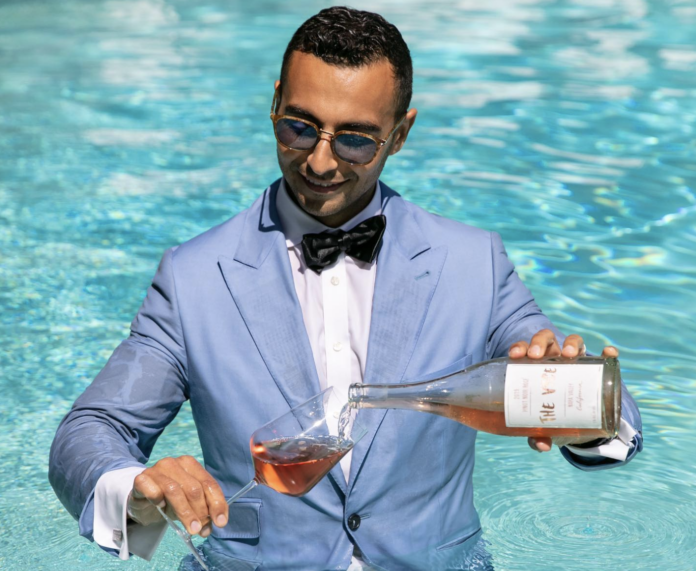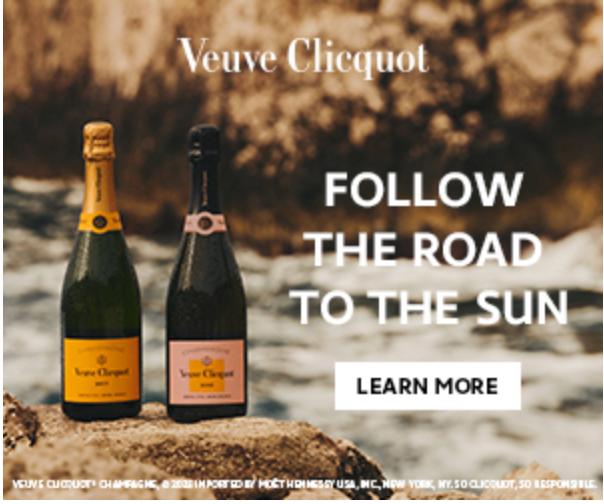Winemaker Malek Amrani’s The Vice Wine is about as personal of a brand as it gets. Each batch is crafted from single grape varietals sourced from hand selected Napa Valley vineyards that best express the grape varietal and the region.
Passionate labor, sustainable farming, a long expertise of the wine industry and a current understanding of the consumer’s wine trend.
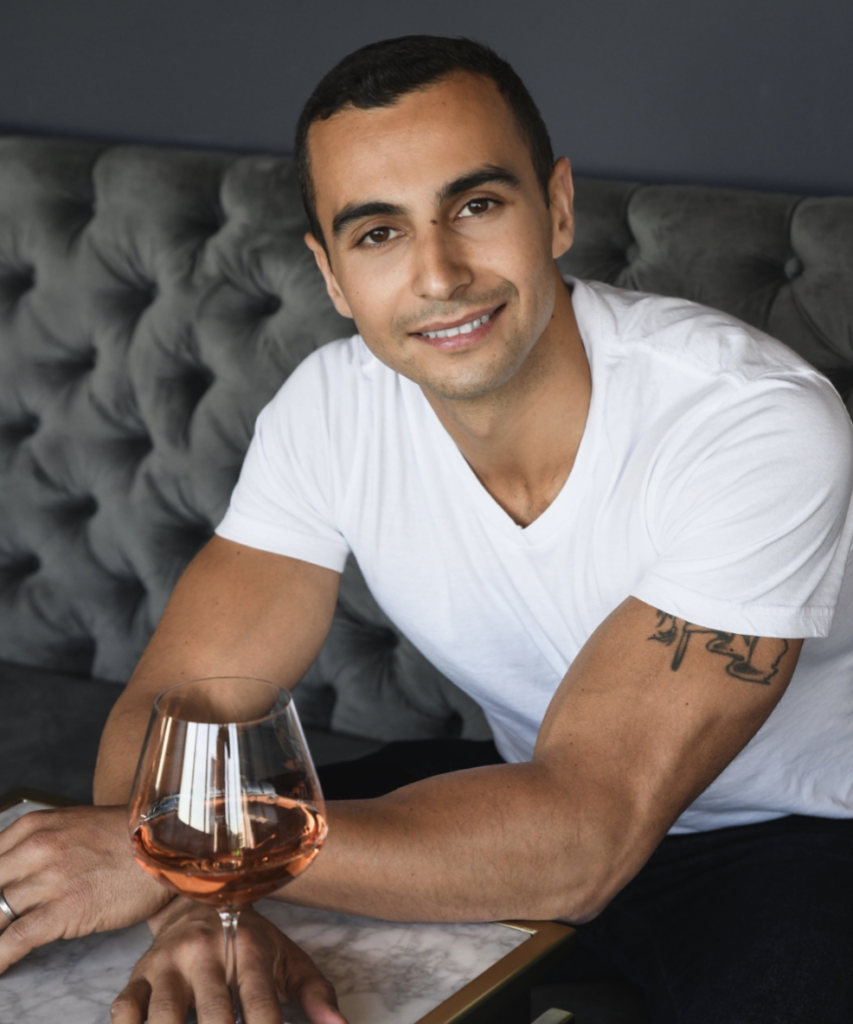
Today I sat down with The Vice Wine’s Malek Amrani for a conversation about luxury sales, Napa Valley’s legendary grapes, following your passion and inspirations and the future of wine for the next generation.
The conversation has been edited for length and clarity. The full conversation can be found on our YouTube channel.
I just want people to understand how busy you are sharing your wines with the world. Can you share a little bit about your average calendar week?
Sure, thank you. First of all, thank you so much for having me today. I just literally just walked in three minutes ago I was in Miami. So I landed in San Francisco a couple hours ago and just got in here So speaking about travel, a lot of what we do is travel because you can make the best wine in the world, but it’s really the ability to go out and sell it that makes us successful or not.
It all comes down to sales. On average, for me, for the last eight years, I average about five, six nights a month at home. A lot of my time has been spent on the road. Although this year I’m trying to shift gears a little bit and spend more time here in Napa Valley and less time on the road.
Got it. So what inspired you to get into the world of wine? Any memorable celebrations?
What inspired me to get into wine was my love for it. I was fortunate enough to start tasting wine at an early age with my father. And I graduated high school at 16 in Casablanca, Morocco.
Went to Senegal, West Africa for med school. I did a year there and realized that it wasn’t for me. And speaking of celebration, I really wanted to do something that was quite celebratory on a daily basis and fun. I moved to New York and the first six months in New York I really just tried to survive and bounced around and did all types of jobs.

But then I quickly realized that I needed to get my hands on wine and not have to pay for it and then meet people as well, because I was new to New York and I had no friends, no family. So I wanted to meet people. I realized that working in the wine industry, wine bars, and restaurants would be ideal to fulfill the two needs that I had at the time.
I dove into the wine industry early on at the age of 18. And between 18 and 21, I worked in the restaurant world a lot. I was working 2-3 jobs consistently. I was fortunate that when I was 21, I got a job in distribution representing Diageo and Moet Hennessy Brands in Manhattan to on-premise accounts, basically restaurants, bars, hotels, and whatnot.
And during that time, I also got inspired to start importing small batch boutique wines to New York and selling them too, selling them to people I knew and make a name for myself in the industry through imports as well, beyond the territory that I had at my first job.
Then in my mid twenties, I was doing it. I realized I had done it all in the wine business, except to make wine. The wine region that I’ve always been a big fan of was Napa Valley. So I looked for a brand that kind of was a solution to what I was looking for one, a Napa Valley winery that made wine for that everyday occasion that I can afford accessibly and to a winery that made more than the classic three or four varietals: Cabernet, Sauvignon Chardonnay, Sauvignon Blanc, Merlot and there aren’t many really.
And lastly a winery that kind of broke down Napa Valley to the sub regions that there are because Napa has such a very diverse terroir and sub regions, 16 in total today. Wow. So I couldn’t find one. So I decided to make one, start one, create one.
You worked at the biggest wine company in the world. How did you go about getting that job?
And then what kind of lessons did you learn while being there?
It was out of luck. I was a buyer for a restaurant on Park Avenue in Manhattan. And I was talking to my sales rep. I asked him if he liked his job and I really didn’t think about applying or anything. He thought that I was interested in a similar position and out of luck, they had open positions and he spoke to my first manager at the company and she called me and she asked me to meet with her.
I honestly didn’t know what she wanted to meet about. I thought she wanted to meet about the restaurant where I was working; and work on some program or something. And in less than 48 hours, I had a job. So I was quite lucky.
But how intense and how it is working at Moet Hennessy or LVMH is a big umbrella.
It’s the number one luxury company in the world. They certainly do a lot of things, they are number one for a reason. And at the same time, I was with the sister company that also owns part of the Moet Hennessy Diageo. Diageo is the biggest liquor supplier in the world and at the time they had wine as well.
So in a way it is easier to walk in anywhere and say I have Johnny Walker or Veuve in my portfolio. But at the same time, from a sales perspective, it was very not aggressive, but very goal-driven. And I found myself that out of 116 months of employment, I was a top quarter performer for 112.
So it was extremely competitive and I wanted to be the best at what I did. All the time. A lot of it really has to do with building relationships and working harder than the competition and doing a lot of things right and never promising something and not delivering.
Is there a major lesson that you learned while working at that global luxury company that has helped the Vice wines?
Yes, I think, many things. My first, probably my most important lesson was to intertwine your personal life and your professional life in this industry. You can’t really separate them and be successful at it. I think it’s just making it work. It is a fun industry, we do go out a lot and get to enjoy a glass of wine during the day or two or three.
At the same time it is work and finding the balance between the personal and the professional and making one feed the other in a sense. It’s one of the biggest advantages that one can do to succeed in this industry.
I think you fulfilled two fantasies that a whole lot of wine people dream about doing. One being rockstar salesman at these amazing companies. The other becoming a winemaker.
Any advice for someone who wants to be who you were a few years ago?
Advice? Yeah, absolutely. One, it takes time. You have to be patient; and persistent and consistent.
To build relationships and establish and build a territory and build certain sales revenue. It doesn’t happen overnight. You first gotta establish relationships and relationships come down to trust. The second thing is it really comes down to being patient and consistent.
Outlasting the competition because there’s such a huge turnover in the industry. So if you trust the process that if you stick around long enough and do certain things right for a long time, people will turn over in the industry and there will be opportunities that will pop up left and right and they will be yours for you to capture.
Personally, one of the things that really made me successful, and a lot of people may not do it, is that for 10 years in Manhattan, I commuted on a motorcycle 12 months a year. The subway was fast, but I never wanted to miss a phone call.
When the average salesperson is probably seeing 5, 6, 7 accounts a day, I was seeing consistently 15 to 20. So I was able to have a bigger territory and see my clients on the regular without appointments. I was on a motorcycle. I was the guy just going to show up and just say hello and I was in and out, just checking on you, see if you need anything versus I have to make an appointment, find parking, all that kind of stuff.
The work ethic definitely, 15 in a day is a very deliberate choice with time and energy.
Your wines are called “Vice”. Was there a “Vice moment” where you knew it was time to move on and become a winemaker?
That moment probably lasted a couple of years. There was a lot of self questioning and self doubt on the daily because I had, at one point, two very successful businesses.
One, I worked my job on a W-2 and the other one, my own business, my imports business. And I was doing pretty well at the time in my mid twenties and, within three, four years, I may have paid a little bit over a million dollars in taxes. How do you let all this go and jump into the vice and, basically not have a revenue?
Especially in the beginning stages, it took me a couple of years to really decide what to do but The Vice, the idea started in 2013.
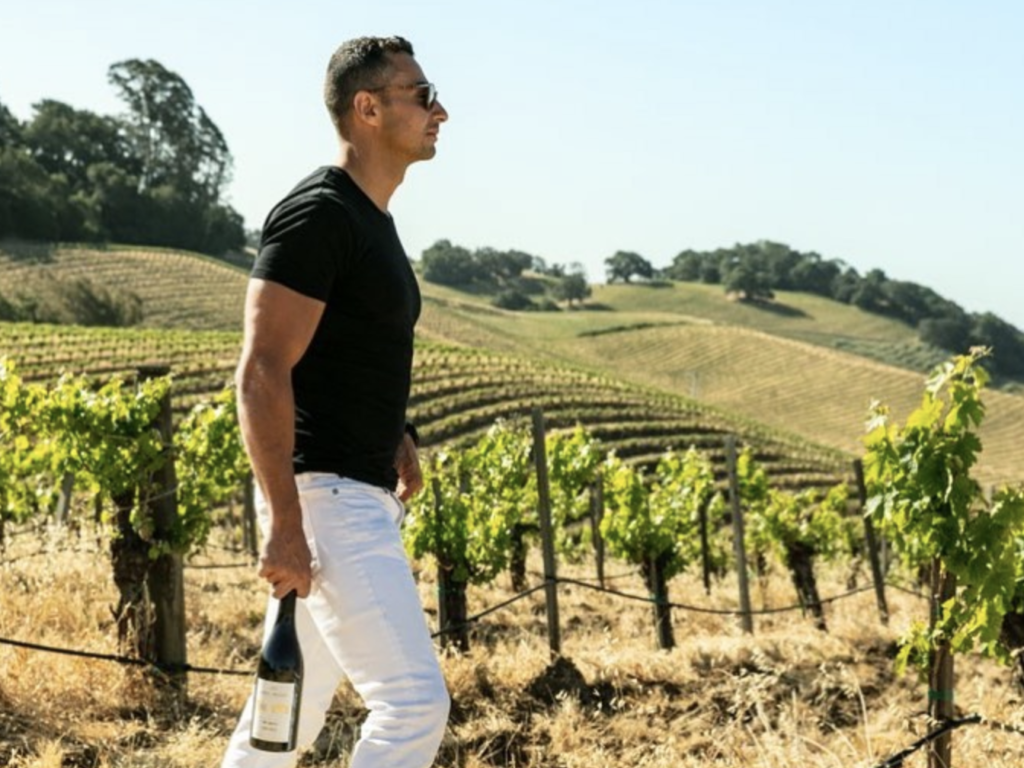
We really became a business in 2016. And I let everything go for The Vice in 2018. It took some time. At one point I was having three businesses happening all at once, and it was very stressful.
So that “Vice Moment, it wasn’t like sudden. It wasn’t quick. It was a long vice moment.
Tell us about the regions that The Vice grapes are sourced in and equally important, how the heck did you get grape sourced from these in-demand areas?
So I chose Napa Valley because Napa, one, is their vice to me, hence the name of the Vice Wine, name of the brand. My vice is wine, but their vice is Napa. And I’ve always been a huge fan of Napa.
And Napa is the apex of the American wine industry is what set the tone for us, what opened, it’s what really led this American wine revolution in a sense. It all started really with Napa back in, in the 60s and 70s. So I wanted to shoot for the top because of that aspect.
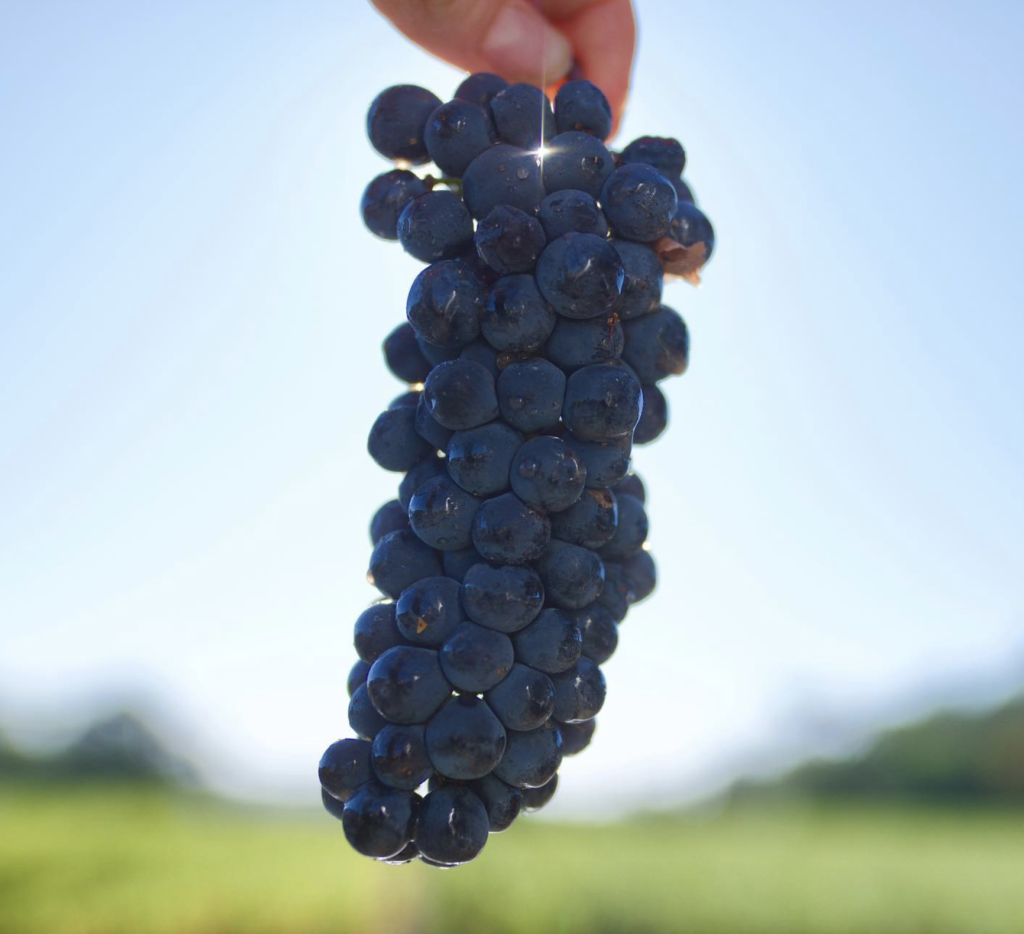
And also, it’s just part of the American dream. As an immigrant, there is nowhere on the planet, I can’t imagine myself going to France, Italy, or Spain, and walking right into their top wine region and say, I’m going to do what I do today. I have no doubt I wouldn’t be welcomed.
Napa did just the opposite and welcomed me and gave me an opportunity, not just as a wine region, but as a community.
The second thing, how I got into having access to these grapes, a lot of it is street work. Putting in the time, coming a lot to Napa and hanging out at a lot of places where winemakers hang out for lunch or dinner and talking to the bartenders and doing my due diligence and investigating on my own and really networking and knocking on doors. Not being afraid to knock on doors and introduce myself to people and tell them about what my plans are and see if they’re willing to sell me some grapes.
In this industry, when you buy, when you contract to somebody, you pay a little bit of what the grapes are worth when you first pick the grapes and then the rest within time in the new year or so.
A lot of what I’ve done in the beginning was pre paying. So I pre paid for the grapes while they were still hanging on the vines. It’s almost like buying the fish while it’s still swimming in the ocean. So in that sense, they owed me versus I was at the mercy of a lot of the growers to sell me grapes. They already had the money, they already got paid.
So they had to work with me in a sense and again, being honest, not being late on payments and having good relationships with the growers goes a very long way.
Can you share your Napa Dream with us that you put on your bottles and let us know what that means to your family?
Yeah, so I’m sipping right now batch number 100, the Napa Dream. So we make our wines in batches. Every single wine, and I made a little bit over 130 wines to date. Every single wine has a number.
It started with number one, which was a Chardonnay 2013 vintage. And when I first started The Vice, I had this long term vision, but I didn’t envision myself to be here today with batch number 100. So batch number 100 is an homage to batch number 1.

I named it The Vice and not my last name. As you see, most of the wine industry, it’s someone’s name on the label. I didn’t want to do that. The Vice to me is what wine is: a Vice. Napa is my vice. So it’s very personal.
But at the same time, the craft beer industry really had a boom in 2008 – 2020. What made it really successful were the names. Craft beer has some really wild names. You look at the name and packaging, and it’s what probably draws you to open the can, you buy it and try it.
At the time in 2013, there weren’t many un-conservative names in the wine business. It was still very conservative names and people’s last names. There was 19 crimes and there was The Prisoner.
I thought The Vice would be a very good name, One, because it meant something to me and Two, it’s very edgy and it’s borderline bad.
It’s not bad. It’s not bad unless you do too much of it. That’s what vices are. If you overdo it, then they become bad. They become addictions, a lot of things, and it’s an easy name to remember.
I’m going to assume almost every wine lover knows Napa Valley. Touch a little bit on the region of Napa, the soil your vineyards are using, and how that influences your aromas and your tastes as we actually get into the bottles themselves.
When people talk about Napa Valley, most of the time we talk about how this perfect Mediterranean climate that we have here, its location about 35 miles east of the Pacific Ocean, the Bay, San Pablo Bay, which is an extension of San Francisco Bay, the microclimate.
We talk a lot about the microclimate, but one thing that I think makes Napa the best wine region in the world, in my opinion, is that Napa has half of the world’s recognized soil.
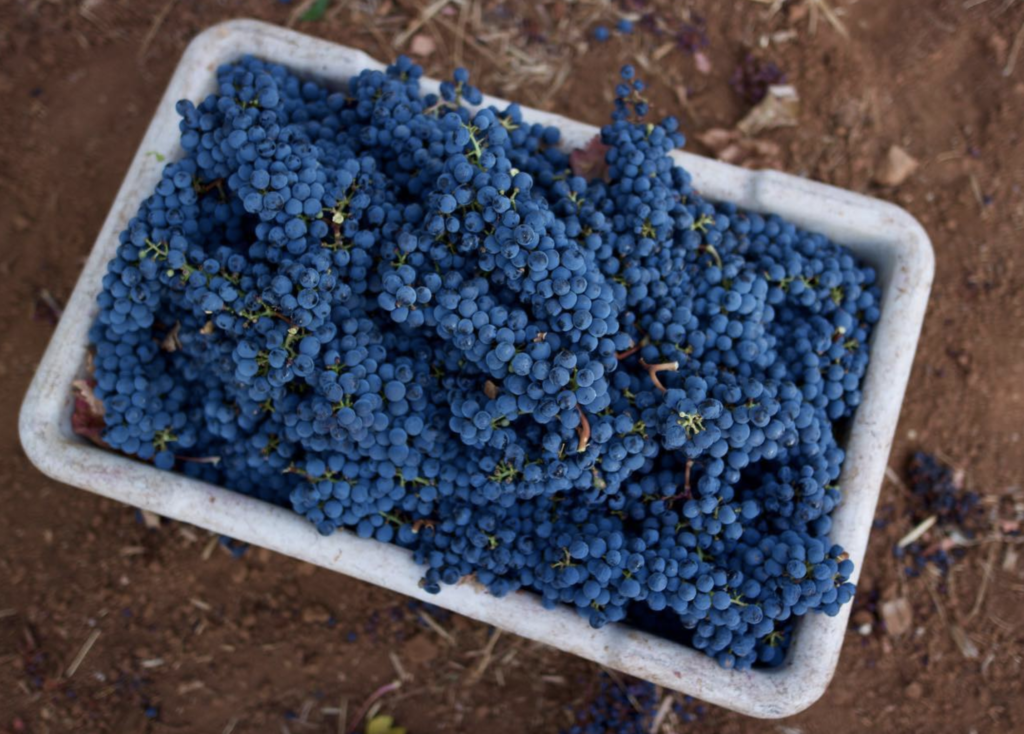
It’s a paradise for someone who is really into soil because there’s so much diversity here. More than anywhere else when it comes to soil diversity, we make wine from 14 out of 16 sub regions of Napa, but within the same AVA. Within the same sub region, we have different soils.
So a lot of the wines that we make are single vineyard wine You do get to taste the purity of the terroir from a specific soil type. It’s something honestly that we can talk about for days and it’s fun for most people.
Going a little deeper in that for a moment.
We picture you in Manhattan, probably very well-dressed at that old job. Now you’re working a farm. What was it like the first time you stepped onto that vineyard.
What that experience was like for you?
For me, honestly, I always felt that my calling was to be in the countryside. Although while Napa is the countryside, it’s like the Hamptons of the West. It’s still probably the most expensive agricultural land in the world.
It’s very beautiful. But being in touch with nature and being a little isolated from the hustle and bustle of civilization, which is usually in the cities. I find a balance when I’m here in Napa because I do travel a lot. I’m on the road and I’m back to the cities trying to sell wine across the U S and also across the world.
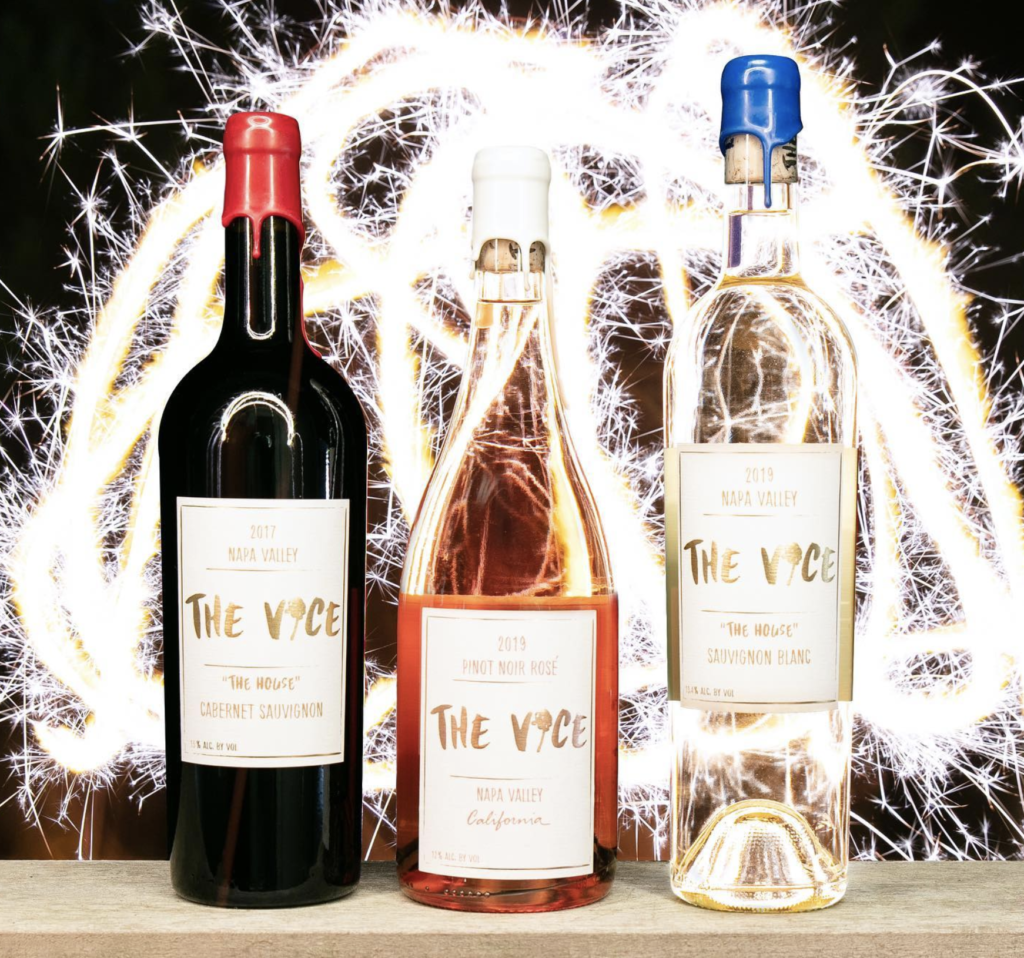
Vineyard life, farm life, it’s my balance. It’s my happy place being in the vineyard. I’m sure you can’t picture me, but I do wear a lot now. I never thought I would ever be wearing cowboy hats a lot. But I do wear them because it covers my head pretty well from the sun.
Walk us through your favorite wines. Let’s talk about aromas and flavors and color and what you love about them so much.
First thing, I don’t have favorites. All my batches are equal to me. Every single batch has a story; is a labor of love. But the wine of the moment right now is my orange wine.
So I started making orange wines in 2020. Orange wine is the oldest winemaking style in the world. Five, six thousand years ago, when they started fermenting grapes to my knowledge, they were white wine grapes.
Today, all white wine, we take the varietals, we press or break the skin of the grape and capture the juice immediately, discard the skin. Orange wine is basically pretending to make red wine with white wine grapes. So there’s skin contact.
So we basically ferment the juice out of the grapes with their own skins and what you get in return, you get some type of orange hue in the wine. The wine I’m opening right now is my Orange of Gewurztraminer and it’s called Brooklynites because that’s where I got the inspiration out of Brooklyn. And we’re doing really well with it. It’s just been very successful for us. It’s up and coming.
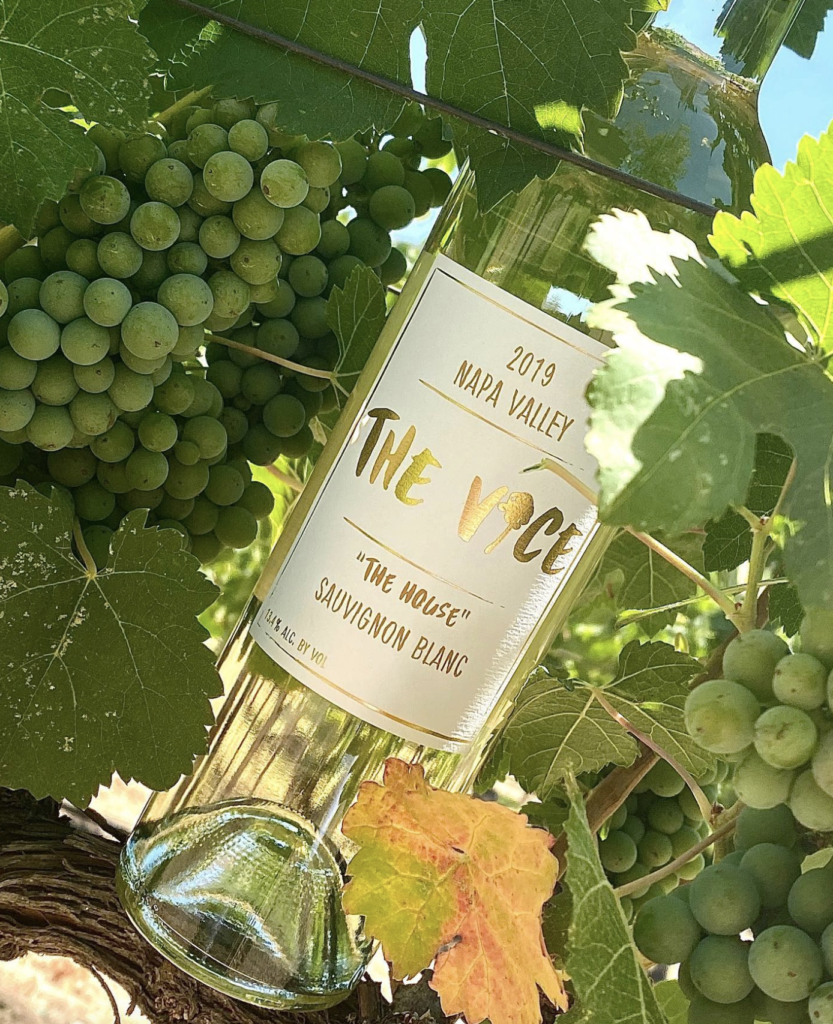
This wine, Orange Wine, reminds me of Rosé of 15 years ago when Rosé just started to make a comeback or just started to grow in sales and popularity.
I also feel like with orange wine, I feel like it’s a generational thing.
If you look at Sauvignon Blanc, for example one of the top white wine varieties right now, 20 years ago, no one was really drinking Sauvignon Blanc, but it was really the Gen X that made it popular.
Same thing with Rosé I feel like Orange is just at its infancy stages right now, and it’s having it’s moment. Driven by millennials and Gen Z’s also Gen X and boomers when they see it on a wine list and they see it in the store, they get curious, maybe a little embarrassed that they haven’t had an orange wine.
They’ve been drinking wine for decades already. So there is a little sense of curiosity when it comes to orange. So it’s doing really well for us. It’s 3,000 case production right now. Our total production of The Vice is 27,000.
And Gewurztraminer, the varietal means spicy. I won’t call it spicy. I’ll call it flamboyant. Because it just pops out of the glass with so much roses, lychee, peach, apricot.
It’s a really pretty varietal and this orange wine of Gewürztraminer is certainly a treat. Very well said.
The 2020 Chardonnay. The mouthfeel, the balance, when you were creating it, how did you decide what it was going to be like?
It is an homage to batch number one, Chardonnay.
So I really wanted to create something almost like there’s a legacy and a celebration for reaching that milestone of making a hundred wines. I wanted to go back to very traditional winemaking. The birthplace perhaps of Chardonnay is Burgundy. And in Burgundy, a hundred years ago, they were not bottling every single year.
They bottled when they needed to. They had good vintages, bad vintages. So it wasn’t this cycle.
Now, the majority of the industry doesn’t age Chardonnay for more than 12 months in oak. Most people have a misunderstanding of oak and malolactic fermentation in wine.
I hear it all the time, people saying, I hate oaky chardonnays because they’re too buttery, too oaky. There’s two different things. Oaky and buttery are two different things. So the malolactic fermentation, the conversion of malic acid into lactic acid, is what gives you that creaminess in Chardonnay.
And predominantly, all red wines go through it. But in white wines, Chardonnay is the only one that goes through malo. And it is a style that’s fading. It’s boomers who love the buttery Chardonnays.
But when it comes to oak you really don’t find anybody aging Chardonnay for 30 months.
It’s a little bit crazy to do, but this was my vision as a celebration. And the funny thing is that I just came back from Miami and the joke, everybody that tasted it. They’re like, wow, what a delicious wine and how did you get the idea? And I was like the joke here in the cellar in Napa was when I was making this wine, everybody here was like, who’s going to drink this wine?
And the joke was Florida will drink it because they love big oaky Chardonnay. But the reality now in the valley and other markets too. The younger consumer is actually loving this wine because it doesn’t have much malolactic fermentation. Only 25% of the wine went through malo. So there is a little kiss of butter.
Almost like buttered popcorn, but without being too buttery, without having greasy hands. And then the oak flavor here is just amazing. Because it just pops with butterscotch and vanilla and full spices and it’s a super long finish. You take a sip and five minutes later, it’s still sitting in your palate which is quite unique for a Chardonnay.
You had a vision before you produced the bottle. How close to reality did it become, and what were the challenges to get it there?
To explain that I have to give you the background. Everything I do is not out of just because I decide to.
Everything I do is it backed by the marketplace. Most winemakers, they have an idea, they go apply it. I have so many ideas. All my ideas actually are based on creating demand that’s already in the marketplace or about to be. So a lot of what I do is research and development.
I’m not going to wait to get a market watch article last year to tell me that this varietal or this segment is trendy. I’m seeing it live in the marketplace. I’m seeing it live with the consumer. I am doing tastings in stores. I’m doing tastings at restaurants, hosting dinners, and seeing what the consumer wants.
So I’m seeing it before the rest of the industry. Everything I do is based on where the trend is going before it even becomes a trend. And it is a gamble because not everything comes to fruition. But that’s the basis of what I do is based on the wine enthusiasts, people that drink wine, their interests and what they want to have in the, what they wanna see.
Let’s talk about your Pinot Noir.
This is my house Pinot Noir. We call it the house because this is what I envision to be the house Pinot, basically a Pinot Noir that you open and whether you drink a glass or finish the bottle. If you drink a glass, you can put the cork back on it and it will be good for at least four or five days.
All our wines are made in a traditional style and they’re exposed early on to oxygen. So they’re oxygen resistant compared to conventional wines. When you open the wine; conventional wine by the second or third day, they already flatten out and turn into vinegar cooking wine. The Pinot Noir here is for the everyday occasion and it doesn’t require any food, although this pairs well with everything.
This is the only red I’ll probably pair with any type of fish. It really is a very good wine on its own. Doesn’t really require food. I make a lot of big Cabernets and big heavy varietals like Petite Syrah and certain Malbecs. Very good. You drink a glass and you start begging for food because some wines really require that.
The House Pinot is my go to wine for that everyday, anytime occasion. It is from Carneros, so it’s Southern Napa, and it’s made in a traditional Burgundian style.
What makes this wine actually unique is that a huge amount of of Pinot Noirs now in California are laced with something else to be a varietal on the label, like Pinot Noir or Cabernet. All you have to be is 75% to 85% based on the county. So there is a lot of blending and we’ve seen a lot during the past few years.
The emergence of jammy Pinot’s. It’s all cut with something big and heavy. Pinot is supposed to be lean. A beautiful aromatic varietal with high acidity. It’s supposed to age really well. So we’re going back to that traditional burgundy style.
The wine next to it is a red wine blend.
We make 14 different cabs, so many different red wine varietals. All these wines I make are 100% single varietal. I don’t like to blend. I just love to showcase the true expression of the varietal from the terroir that it comes from of Napa Valley.
I made this wine and I called it Millennial. This is batch number 96 Millennial. And this wine is a blend of different varietals. It’s like a world blend almost. It’s 63% Petite Syrah, 22% Malbec. 8% Tempranillo, Spanish varietal, 7% Primitivo, an Italian varietal, and 1% Charbonneau which is a very rare varietal that we have here in Napa. So multiple varietals, I called it the Millennial because, I found that the millennial consumer is looking more for a style when it comes to a red wine, something that’s medium body, fruit forward, softer tannins. And they’re not really much into what vintage is it, what’s the region, what’s the AVA, they are still very price conscious.
So the retail price for is $29. It’s our least expensive red wine that we make. And it’s a really mouthful of a wine. It’s very juicy. It’s like lava cake in a glass. Although it’s dry, it’s got no residual sugar. It’s still so fruit forward. And there are so many flavors from lava cake to blueberry compote to raspberry jam.
We did not put anything. No vintage, no AVA, no nothing. We just wanted to focus on the blend itself and, that’s a red wine, it tells you exactly who it’s made for.
I’m not sure if you see yourself as a foodie. Any food pairings that you recommend with your wines?
Yeah, I certainly consider myself a foodie. Half of my time alive is spent going from one restaurant to another. Granted, I don’t eat at each one of them all the time, but I do try to eat a small dish everywhere I go and try different things, different cuisines, and I love, as someone that was born in Morocco, I love flavor.
Maybe part of my success in winemaking has to do with my palate. And my taste for my open mind, the taste for food also, and being willing to try different flavors.
When you say Napa, people think Cabernet right away. No one would ever think of orange wine first. Maybe not anytime soon, hopefully one day, but as of now, everybody thinks Cabernet. And. Cabernet to me or some red, big red varietals I think the best friend for our big wines.
My favorite pairing right now is this orange wine. I find myself drinking a lot of Orange lately. And this orange gewurztraminer, favorite companion to Southeast Asian cuisines like Thai, Vietnamese does really well with it. I’ll say Indian cuisine with curries and or even Middle Eastern cuisines. The orange gewurztraminer does really well with them.
I really like to keep it simple. I love to cook with a lot of herbs and spices.
You don’t want to overwhelm it. You don’t want to ruin the taste. You want to enjoy it by keeping actually the food that goes with it simple. Just 1, 2, 3, 4 herbs or spices just to enhance the dish. and bring out the flavors of the wine.
Talking about the Vice team, you have a world class CMO and you have a genuine superhero. Can you talk a little bit about your team?
We met in 2008. We actually worked together and we’ve been together now since 2008. We’ve been married 10 years. Tori is my partner, but life partner and business partner, of course.
Her background is fashion. So she was a creative director at her last job. And she went to Parsons in New York for fashion. Her entire life she knew she wanted to be in fashion.
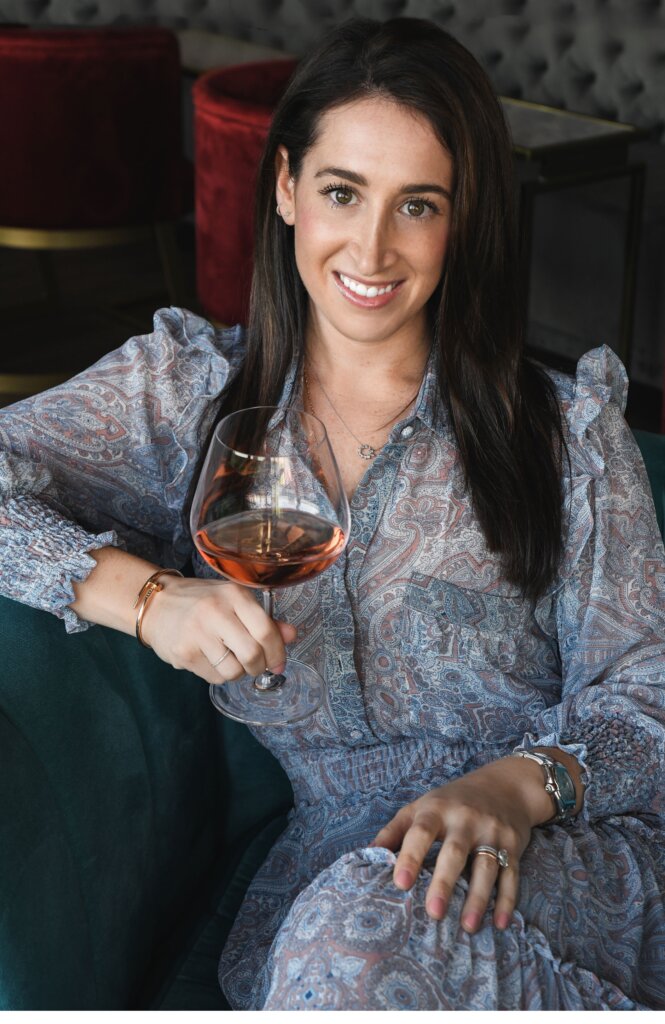
I wouldn’t be here today, The Vice would not exist if it wasn’t for Tori. She was crucial, especially for the creation of The Vice, the label, the marketing aspects of it. And today she’s 100% on board with The Vice. She has no other job. She’s the CMO of The Vice.
My assistant winemaker; he’s the joy of every day life. His name is Bruce Wayne and he’s an eight year old Tibetan Terrier. He’s got a better nose than any of us. He loves to be in the cellar because of the cool temperature. And as I said probably in the beginning, intertwining personal and the professional. Having him around most of the day when I’m here in the Valley, or just having him come with me, he’s a very good boy. It certainly adds a lot of happiness to what we do and it, it helps with the craft of The Vice.
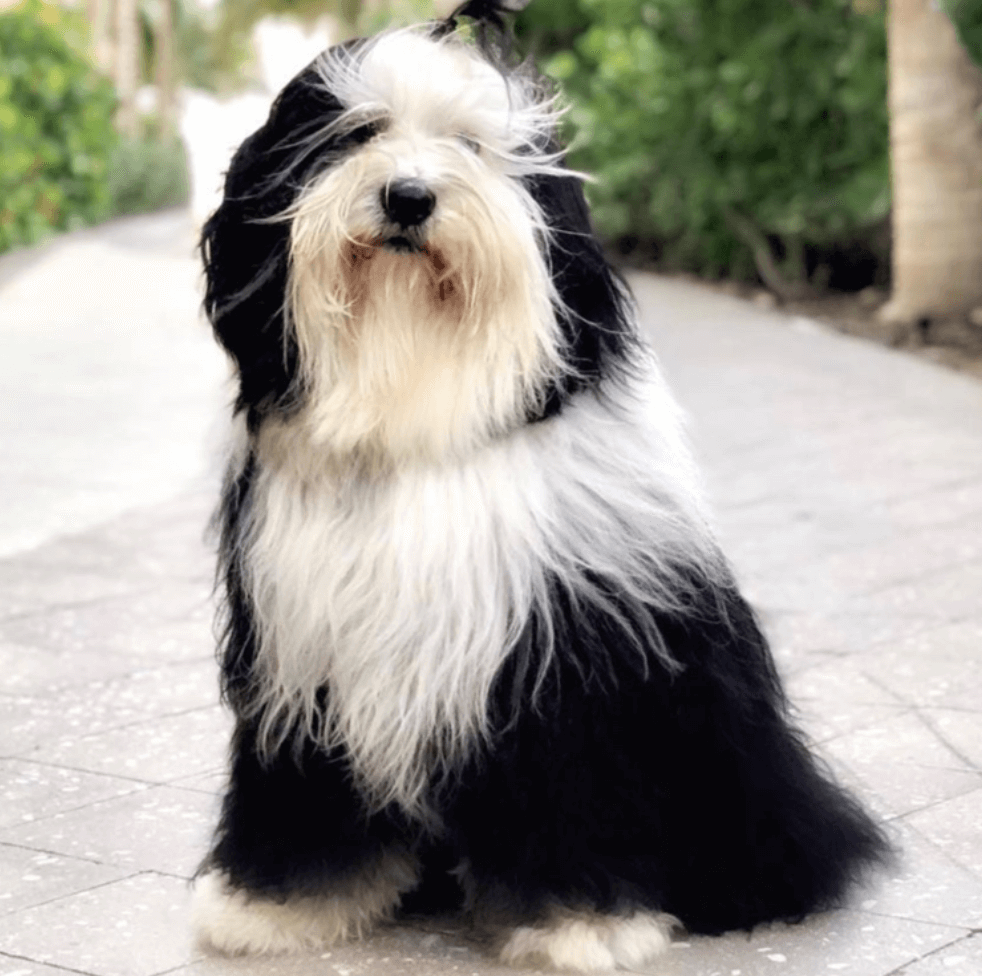
You mentioned that Tori has a fashion background. What was the transition from fashion to to wine like?
Her transition was similar to mine. It was more of a hobby, part time fashion project and part time helping The Vice. And then last year, we had a baby, our first baby. After she went back to work after her maternity leave, she realized that she wanted to focus on the baby a little bit and also full time on The Vice.
Where do you see The Vice in 5 years? What can we look forward to?
Thank you for asking. The vision since day one was to be an international brand. Today we are in four international markets and 14 states in the U. S. But this secret fantasy that I’ve had since day one about creating The Vice was for the French to drink The Vice.
The French don’t drink American wine. In fact, if you are from Burgundy, you probably don’t even drink Bordeaux, or you don’t drink Sancerre, or you don’t drink Provence. They’re into their own wine regions.
Globally where we will be 5, 10, 20 years, I don’t like to really put deadlines and time limits because the passage of time does things that, it’s very subjective.
The last three years were great for our business. If anything, it spurred us to grow more than we expected. Our long term goal with The Vice is to leave a legacy in the valley and for the brand to inspire the next generation of people to be the voice for a fresh voice in Napa.
From a sales perspective, we are at 27,000 cases. We want to be at 100,000 cases. We want to be in a million cases. But most importantly, we want to maintain the quality and the integrity of the wine that we make.
Younger audiences are booking for healthier wines
There is a lot of formula wine. Wine that has probably 30 ingredients you and I can’t pronounce because it’s not FDA regulated and you know they make it taste consistent year after year and there’s a lot of chemistry that goes into it.
Our wines are very simple. There are two ingredients, grapes and a little bit of CO2 to maintain stability. So long term for us is to continue to be a true craft wine, real wine that’s good for you if you drink it in moderation.
How can we shop your wines? How can we find you?
Thank you for asking how you can help. I see myself as an ambassador of Napa Valley, so I encourage you to please discover Napa and keep it as the leading wine region in the world. We are a one stop shop for Napa Valley. We have the most diverse portfolio of Napa Valley wines at a great price point.
Please check us out, www.TheVice.com. Please follow us. Please don’t hesitate to reach out. Fun fact is that our corks have my phone number on them. You can text me, call me, DM me, FaceTime me. If I’m not in an awkward situation, I’ll pick up. But I’m very accessible. I’d love to I’d love to hear from you.
I’d love to answer your questions. I’d love to help you discover the wine industry, but specifically Napa. I’d love to help you not only discover it and enjoy it as well.
That is incredible. So thank you. I really appreciate your time.


